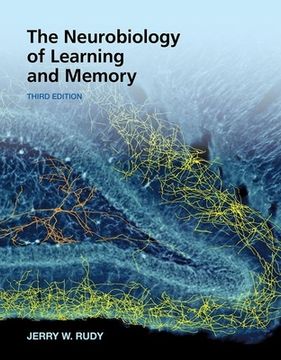Share
The Neurobiology of Learning and Memory (in English)
Jerry W. Rudy
(Author)
·
Sinauer Associates Is an Imprint of Oxford Un
· Hardcover
The Neurobiology of Learning and Memory (in English) - Rudy, Jerry W.
$ 199.99
$ 271.41
You save: $ 71.42
Choose the list to add your product or create one New List
✓ Product added successfully to the Wishlist.
Go to My WishlistsIt will be shipped from our warehouse between
Monday, June 24 and
Tuesday, June 25.
You will receive it anywhere in United States between 1 and 3 business days after shipment.
Synopsis "The Neurobiology of Learning and Memory (in English)"
To understand how the brain learns and remembers requires an integration of psychological concepts and behavioral methods with mechanisms of synaptic plasticity and systems neuroscience. The Neurobiology of Learning and Memory, Third Edition, provides a synthesis of this interdisciplinary field. Each chapter makes the key concepts transparent and accessible to a reader with minimal background in either neurobiology or psychology and is extensively illustrated with full-color photographs and figures depicting important concepts and experimental data. The goal of this book remains the same as it was for the previous editions-to present a story of how memories are made. The story has three major parts, which have been expanded to include new chapters or reorganized to incorporate new findings and concepts. Part One explores the molecular basis of the synaptic changes that support memory. It begins with an overview of memory from the perspective of the brain. It next describes the long-term potentiation methodology used to study how synapses are modified and concepts needed to understand the organization of synapses. The remaining chapters are organized around the idea that the synaptic changes that support long-term potentiation evolve in four overlapping stages referred to as (a) generation, (b) stabilization, (c) consolidation, and (d) maintenance. The goal of each chapter is to reveal that each stage depends on unique molecular processes and to describe what they are. There are now separate chapters on the generation and stabilization of long-term memory and the chapter Consolidating LTP: Specific Mechanisms has been extensively revised to give proper treatment to the local events in the dendritic spine region that consolidate memories. Part Two builds on this foundation to show how molecules and cellular processes that have been identified from studies of synaptic plasticity also participate in the making of memories. It discusses some of the basic conceptual issues researchers face in trying to relate memory to synaptic molecules and describes some of the behavioral and neurobiological methods that are used. The chapters describing the processes involved in memory formation and consolidation have been extensively modified to provide a more detailed account of the molecular events that are engaged to ensure that established memories endure. The chapter Maintaining Long-Term Potentiation has been revised to provide a broader view of the topic. New chapters focus on recent advances in the neurobiology of forgetting (The Yin and Yang of Memory: Forgetting versus Maintenance) and the search for engrams (Hunting for Engrams). The Fate of Retrieved Memories chapter has been significantly revised to emphasize the importanceof memory destabilization processes and how they combine with memory integration processes to allow new information to be incorporated into the retrieved memory. Part Three is organized around the multiple memory systems view-that different neural systems have evolved to store the content contained in our experience. Three chapters are aimed at issues that surround how the medial-temporal hippocampal system supports episodic memory. The first begins with a discussion of Brenda Milner's research on H.M. that directed researchers to the hippocampus. The Hippocampus Index and Episodic Memory chapter has been significantly revised to include new findings, based on modern molecular techniques, that support Teyler and DiScenna's hippocampus index theory. A separate chapter, When Memories Age, is devoted to issues that emerge when researchers confront what happens as memories grow old. Next the cortical-striatal system and its relationship to what are called behavioral actions and habits is described, and the book ends with a discussion of neural systems involved in the acquisition and removal of emotional memories.
- 0% (0)
- 0% (0)
- 0% (0)
- 0% (0)
- 0% (0)
All books in our catalog are Original.
The book is written in English.
The binding of this edition is Hardcover.
✓ Producto agregado correctamente al carro, Ir a Pagar.

